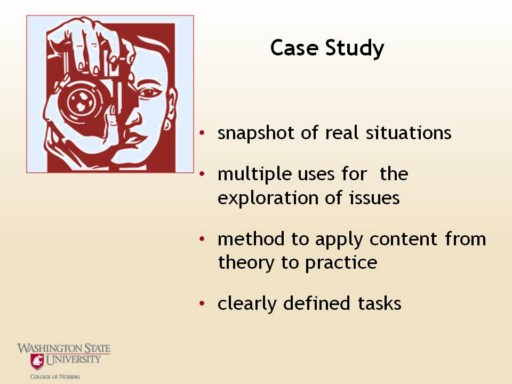| front |1 |2 |3 |4 |5 |6 |7 |8 |9 |10 |11 |12 |13 |14 |15 |16 |17 |18 |19 |20 |21 |22 |23 |24 |25 |26 |27 |28 |29 |30 |31 |32 |33 |review |
 |
Case studies that are authentic, realistically complex and presented in a way that makes the complexity manageable are the richest learning activity. They should be sequenced to support the students’ needs at different stages of learning throughout the course. Case studies allow various views of the situation to be shared and are a useful way to teach others about situations faced by others. Case studies typically have three components: Scenario: Introduces the readers to the individual(s) in the situation.
•Provides
some relevant background.
•Describes
the current situation.
•Contains
some unresolved issues.
Questions for the Readers Challenge and guide the readers to apply what they know to this situation and to consider various approaches to the unresolved issues in the scenario.May be used by individuals or to stimulate group discussion. Facilitator Guide
•Provides
comments about potential responses to the questions.
•Enables
readers (or teachers) to evaluate answers to the questions.
•Assists
facilitator and/or readers to think further about the issues.
•Helps
move the thinking or discussion farther if participants get stuck.
Some case studies include a bibliography, which allows readers to explore the issues further.
|